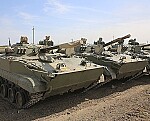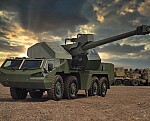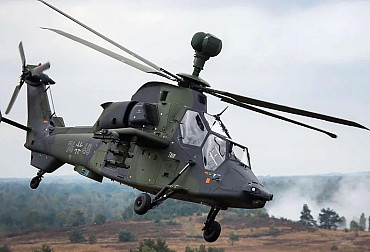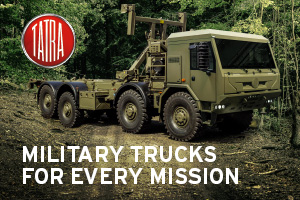Spanish Army receives first batch of VCR 8×8 Dragón vehicles
The Spanish factory Trubia (Asturias), of the GDELS-Santa Bárbara Sistemas consortium, started production of the VCR 8×8 Dragón wheeled armoured vehicles in 2021. Over four years after signing the contract with TESS Defence, the Spanish army has finally received the first batch of 8x8 Dragón combat vehicles.
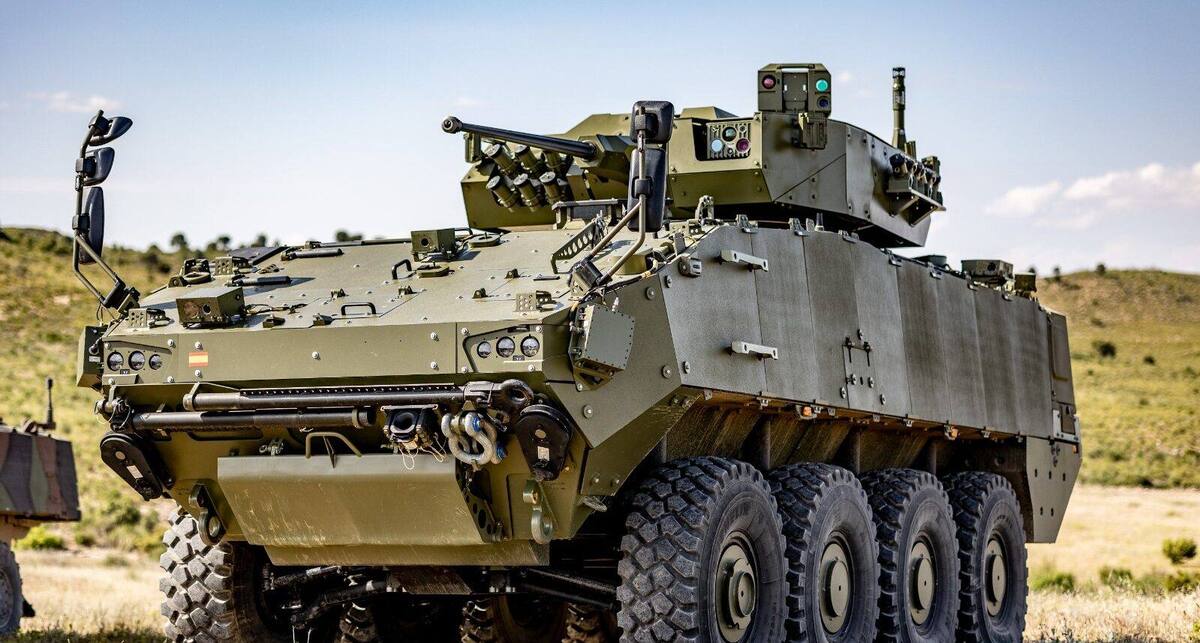
The VCR (Vehículo de Combate sobre Ruedas – Combat Vehicle on Wheels) 8×8 Dragón is the Spanish name for the Piranha 5 armoured vehicle developed by the Swiss subsidiary GDELS-MOWAG. The Spanish Government approved the acquisition of the VCR 8×8 Dragón in July 2019, but since then, the project has been plagued by delays, budget cuts and technical problems, preventing it from meeting its original deadline. In December 2019, the acquisition was cancelled, then relaunched in May 2020. The contract was signed on 25 August 2020 for the production of 348 vehicles for a total of 1.74 billion euros. The project to develop a new VCR has become one of the Spanish government's most ambitious programmes as part of the rearmament of the troops. In total, it is planned to spend 2.5 billion euros on the acquisition of Dragón, the program aims for up to 998 vehicles long-term.
VCR 8x8 Dragón replacing the Pegaso BMR vehicles
The VCR 8×8 Dragón will be developed in five variants: armoured Infantry Fighting Vehicle (VCI), command post (VCPC), reconnaissance vehicle (VEC), engineering vehicle (VCZ) and artillery observation vehicle. The modular design of the armoured vehicle means that it can be manufactured in other configurations, including strike/missile carrier or medical versions. Up to 13 variants are planned. Within the Spanish armed forces, the VCR 8×8 Dragón will replace the Pegaso BMR-600 and the Pegaso BMR VEC-M1 (Blindado Medio sobre Ruedas, Medium Armoured Vehicle on Wheels), both on a 6x6 platform, and partially the M113 fleet.
Indra leads the TESS Defence consortium, which has been managing the project since 2020 alongside GDELS-SBS, the Escribano Mechanical & Engineering (EM&E) group and Sapa Placencia. The project officially started after a long selection and demonstration phase. Ángel Escribano, of Escribano Mechanical & Engineering, and current executive president of Indra Sistemas, emphasises the complexity of the vehicle, particularly its communication systems, which include satellite equipment and several radios adapted to operational needs. He also highlights the successful integration of these technologies and the rigorous tests carried out, including explosion and electromagnetic compatibility tests. These tests guarantee smooth production, with deliveries scheduled on a regular basis.
In February, the Secretary of State for Defence, Amparo Valcarce, noted that the planned deliveries would be postponed until 2025. Despite this, Escribano has assured that the VCR 8×8 Dragón is the most advanced platform in Europe. He explained that progressive production allows for better long-term quality control, avoiding the risks associated with mass production and costly corrections, thus guaranteeing the vehicle's success in national and international markets. "The test phase has been extended to ensure that there will be no problems during series production. The main thing is to avoid mass production of an unfinished product," Escribano explained. Almost five years after signing the contract with TESS Defence, the Spanish army has finally received the first batch of 8x8 Dragón combat vehicles during the first half of April. The first order includes 92 vehicles, with production expected to be completed by 2025. A total of 998 units are planned to be purchased.
VCR 8×8 Dragón
The VCR 8×8 Dragón is a modern armoured vehicle designed to strengthen the capabilities of the Spanish Army. It is equipped with a 620 horsepower Scania engine, offering great mobility on the road and excellent off-road performance. Its armament includes a Guardian 30 turret with a 30 mm MK44S cannon and Spike LR anti-tank missiles. It offers enhanced protection against various threats, with armor that meets NATO standards. The Dragón also incorporates advanced communication and detection systems, including 360° artificial vision, improving coordination and battlefield awareness.
The VCR Dragón surpasses the Pegaso BMR in mobility, protection, firepower, technology, and versatility, aligning with modern warfare requirements. Its advanced systems and modular design make it a cornerstone of the Spanish Army’s modernization, though its larger size and weight posed initial logistical challenges that have been mitigated. The BMR, while reliable and versatile for its time, is outclassed by current threats and operational demands. According to Ángel Escribano the VCR Dragón is "the best platform currently available in Europe".





